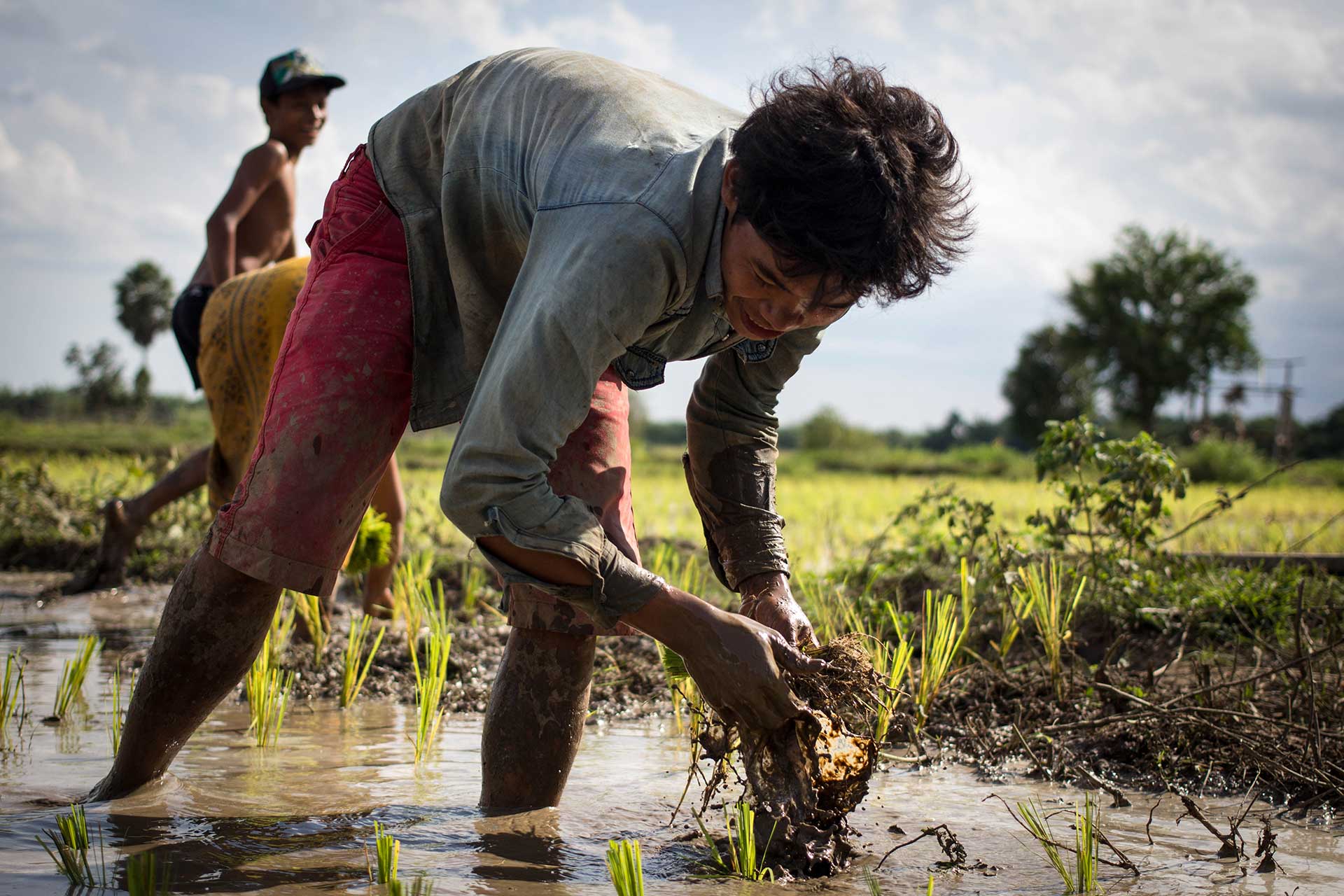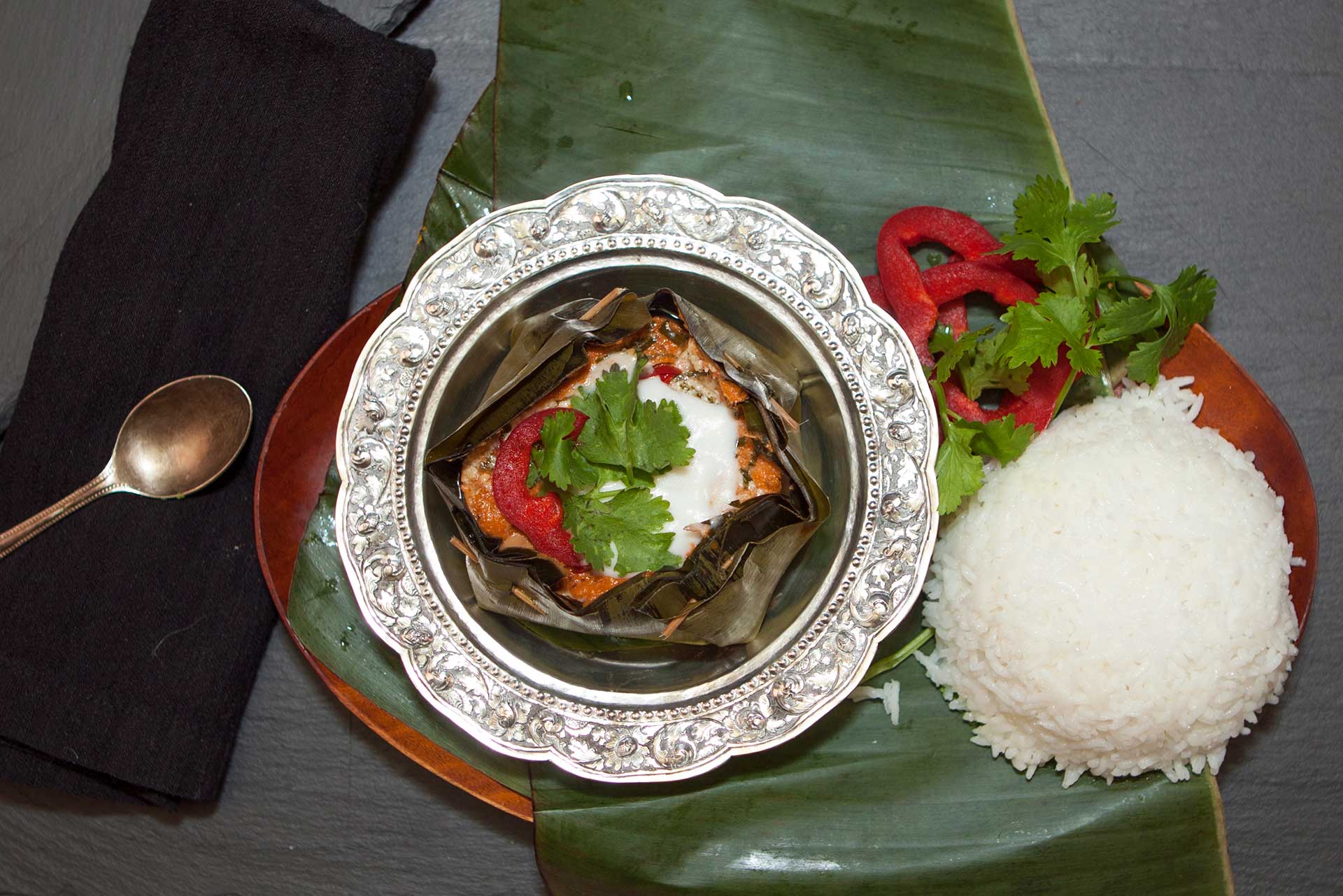This Cookbook Explores Climate Change Adaptation
Climate report after climate report has presented and then confirmed the harrowing truth: the pace of global warming is much faster than previously thought, and estimates are that by 2040, the extremes of drought and flood, soil devastation and loss of resources will lead to global food shortages.
In many developing countries like Mali and Sudan, the landscape is already rapidly changing because of these extremes in weather. With the majority of people dependent on agriculture to survive, these populations are already feeling the impacts to their daily lives and livelihoods.
The 2017 “Adaptive Farms, Resilient Tables” cookbook focuses on work done by the Canada-UNDP Climate Change Adaptation Facility (CCAF) in six of these countries — Cabo Verde, Cambodia, Haiti, Mali, Niger and Sudan — to help farmers adapt to these changes in temperature, landscape and weather and reduce some of the resulting food insecurity. Along with stories and lessons learned in each country, the book features 18 recipes, including Haitian red pea soup, Cambodian steam curry and Sudanese cowpea sauce, that highlight the benefits of their changes and gives advice for moving forward.
While the US might not share the same climate as Haiti or the same geography as Cambodia, understanding these lessons can help prepare us for our own climate challenges. In the United States, we too will have to make changes to both what we grow and how we grow it. Already, major flooding and increased temperatures are impacting US farmers.
“Our hope is that the recipes and information provided in this publication will highlight the dynamic and delicious world we live in,” says Adriana Dinu, Executive Coordinator of the UNDP Global Environmental Finance Unit, “and inform and inspire future adaptation.” Here are some of those lessons, all of which can be useful in thinking about making our own food system more resilient:
Shifting to Climate-Resilient Water Management Systems
Rising temperatures, decreased rainfall and drought are some of the biggest problems facing the countries featured in “Adaptive Farms, Resilient Tables,” especially considering that most developing countries use rainwater as the primary water source for farming. Projections suggest, for example, that rainfall in Cabo Verde — which already has a nine-month dry season — will decline by 20 percent by 2100. This dry weather, along with inefficient methods of using the available water, had diminished farming production, causing a lack of access to food and overall poor nutrition within the community. Catchment basins, pumping wells, solar-powered pump systems and fodder banks were all adaptive techniques put in place in areas like Cabo Verde to help improve continued access to rainwater.
Climate is also having huge impacts on water in the US, with some areas experiencing drought and others struggling with flooding. US farmers and food companies are increasingly seeing the power of regenerative farming techniques that build healthy sponge-like soil — an effective climate resilient water system.
Emphasis on Ecosystem Management
Rising sea levels and intense rainfall in developing countries like Haiti led to widespread soil erosion and ecological degradation, making successful agriculture much more challenging. By not only focusing on crop production, but also mangrove reforestation — since mangrove forests help protect the coastal regions from natural elements and are home to a variety of fish, shrimp and crab — Haitian farmers are investing in future food security in multiple ways. Ecosystem management, through techniques like regenerative agriculture or shoreline habitat management, is going to be hugely important here in the US.
Biodiversity
Like many of these countries, Cambodian farmers are primarily dependent on one cash crop: rice. The CCAF project encouraged these farmers to also plant home vegetable gardens with a more diverse spread of resilient vegetables like beans, lettuces and peppers. This not only provides a safety net and a second income stream through vegetable sales to local markets, but it also increases the communities access to fresh, nutritious foods.
For recipes like the cookbook’s amok, a Cambodian steamed curry (see recipe below), rural community members would previously have had to travel to a local market to purchase ingredients like galangal and turmeric. By growing their own produce, made possible by using some of the water management techniques described above, villagers are now growing these ingredients for themselves year-round.
Like Cambodians dependence on rice, the US has become unnecessarily dependent on a monocrop industrial food system, one that is directly contributing to greenhouse gases and environmental degradation. It’s imperative the we move to more sustainable systems that promote biodiversity, which in turn are more resilient to the effects of climate change.

Focusing on Resilient Crops
Changes to water and land management practices are key, but these farmers are also shifting to more resilient crops, ones that can stand up to hotter temperatures, erratic rain patterns, violent winds and increased flooding. We are starting to see calls for similar shifts in the US, with investments in crops like kernza, which has deep roots that can sequester carbon and build healthy, resilient soil.
Potatoes
Hardy tubers that grow easily and store well, potatoes are an ideal crop when planning in less than ideal environments. Farmers in countries like Cabo Verde, Sudan and Mali worked with the CCAF to determine more resilient varieties and switch to higher-nutrient varieties, like sweet potatoes, in order to get the most nutritional value from their crops. In the book’s recipe for Caldo de Peixe, a Cabo Verdean fish soup made with root vegetables and tomatoes, orange-fleshed sweet potatoes take the place of traditional white ones.
Rice
As the staple crop of Cambodia, rice plays a major part in its agriculture, economy and cuisine. Along with shifting to varieties that are more climate resistant, Cambodian farmers are now using improved water management systems and better irrigation systems to ensure they have the necessary water needed and increase production. Rice, a staple of many of these countries’ diets, is featured in several of the book’s recipes: served with the Malian fakoye sauce; a Haitian stew; and a Cabo Verdian soup.
Cowpea Beans
A versatile crop that can be grown for both food or livestock fodder, cowpea beans, like many legumes, enhance the fertility of the soil, making them doubly beneficial to farmers. The crop is traditionally used in Sudanese soups and sauces; in “Adaptive Farms, Resilient Tables,” cowpeas are boiled until soft, mashed into a pasty texture and then steamed in a meaty tomato sauce.
Starches
Millet, sorghum, maize and manioc are popular starches in countries like Niger, Mali and Sudan, but the crops have become increasingly vulnerable to drought and the erratic weather brought on by climate change in these countries. By switching to new, more resilient and drought-resistant varieties of these crops, the farmers profiled in this cookbook have been able to increase yields and improve the livelihoods of their rural communities through increased food access and improved nutrition. In Mali, many meals are served with millet, corn or rice porridge; the book includes the Malian recipe for tô, a dough made from millet, sorghum or maize flour. Served with a tomato sauce, the mixture is similar to a thick polenta or tamales filling.

Recipe: Amok (Steam Curry)
From “Adaptive Farms, Resilient Tables”
Fish Amok is a quintessential traditional Cambodian dish, with complex flavours from the fish, coconut milk, and a blend of spices. It is a sweet curry, with a custard-like consistency resulting from the process of steaming as part of the preparation. It is usually served in a banana leaf and topped with coconut milk.
Ingredients
For the Red ‘Kroeung’:
30 (1 oz) lemon grass stalks (sliced finely)
1 tbsp. lesser galangal (cut small)
1 tsp. turmeric (cut small)
4 garlic cloves
2 shallots
2-3 dried red chilis, thinly sliced
Zest of kaffir lime, thinly sliced (if fresh kaffir limes are available)
For the Amok:
300 g (10 oz) of fish fillet
180 ml (¾ cup) coconut cream
2 cups coconut milk
1 tsp. shrimp paste
1 egg, beaten
300 g (10 oz) young noni leaves (removed from stem) or spinach or the leaves of Chinese broccoli
1 tbsp. fish sauce
3 tbsp. kaffir lime leaves (sliced thinly)
2-3 chillies (optional)
Banana leaves
Directions
For amok steam curry, the red ‘kroeung’ needs to be prepared beforehand.
Prepare the red ‘kroeung’ by pounding all the ingredients into a smooth, paste-like mixture. Add shallots last.
Stir the red ‘kroeung’ into 1 cup of coconut milk and add the shrimp paste.
When well mixed, add the beaten egg, fish sauce and sliced fish.
Add the remaining coconut milk and mix well.
Prepare the banana leaf cups.
Place the noni leaves at the bottom of each banana leaf cup.
Fill the banana leaf cups with the fish curry mixture.
Steam for about 20 minutes.
Before serving, top with coconut cream, thinly sliced kaffir lime and chilli.
Excerpt from “Adaptive Farms, Resilient Tables” the Canada-UNDP Climate Change Adaptation Facility (CCAF).
More Reading
In a beefy moment, beans?
November 4, 2025
Can extended producer responsibility programs push food companies to use sustainable packaging?
October 16, 2025
The meat industry smeared the Planetary Health Diet. Now its creators are back with more evidence.
October 10, 2025
The latest Global Plastics Treaty talks failed. Where does that leave the plastic pollution crisis?
September 23, 2025
For these cocoa farmers, sustainability and the price of beans are linked
September 17, 2025
This fall, get involved in one of these campus sustainability initiatives
August 26, 2025
What we’re reading this summer
July 17, 2025
A new book says tech-supported industrial ag will feed the world. Agroecologists would like a word.
July 9, 2025
Use a grocery store trip to teach kids environmental stewardship
July 7, 2025
Can rye growers get consumers and retailers excited about rye?
May 19, 2025

